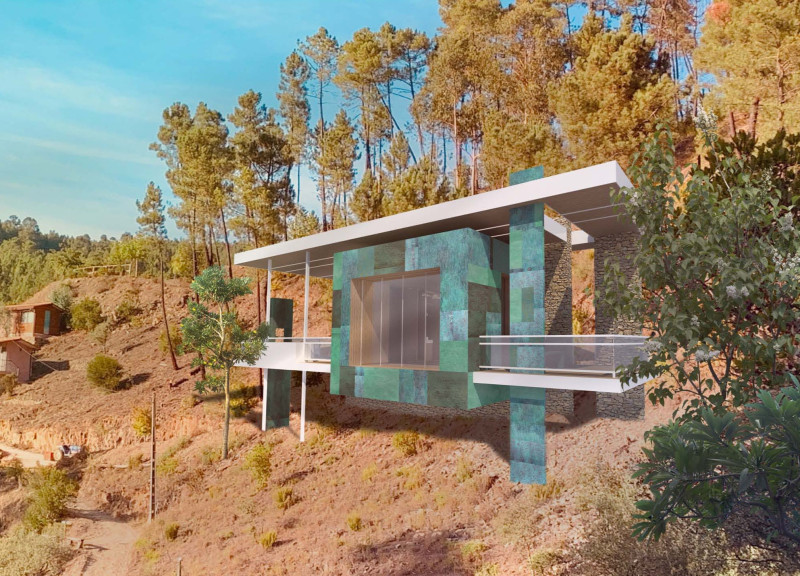5 key facts about this project
The design combines meditation cabins with a meditation grotto, set among a natural landscape that encourages calm and connection. The project features a mix of small, lightweight structures and a more solid grotto, creating a balance between delicate and grounded elements. The intention is to promote a space where visitors can reflect and engage with their surroundings, facilitating both personal and communal experiences.
Meditation Cabins
The meditation cabins are simple in shape, featuring a straightforward rectangular form. A large porch greets guests, offering a space where they can transition into a meditative mindset. Inside, a climate-controlled therapy room, enclosed in a copper cube, provides views and necessary storage, enhancing the overall therapy experience. This arrangement allows for distinct areas while keeping the design unified and cohesive.
Materials and Sustainability
Sustainability is a key focus in the design, highlighted by the choice of materials. Reclaimed wood, recycled steel, recycled copper skin, bamboo, and cork are used throughout the project. These materials serve not only practical functions but also contribute to reducing environmental impact by using resources that limit new material extraction. The careful selection aligns with current practices in sustainable building design.
Meditation Grotto
The meditation grotto is located on an elevated part of the site, acting as a central space for community activities. Its roof terrace serves multiple purposes: hosting events, Tai Chi practices, and providing views of the valley. Rainwater is collected on the terrace, which can be used again, emphasizing thoughtful resource management. Inside, the grotto contains various rooms, including spaces for treatment and meditation, accommodating different wellness activities while also respecting the surrounding architecture.
Design Details
The cabin roofs include photovoltaic cells to enhance energy efficiency, and drainage systems channel rainwater to an underground cistern. These features add to a design that prioritizes not only functionality but also its connection to nature. Overall, the project encourages visitors to reflect and engage with their environment, offering a rich experience that balances community and solitude. The arrangement of spaces facilitates movement, guiding users naturally between shared and private moments.





















































